
Materia Arquitectura
Scope & Guideline
Elevating architectural discourse through inclusive research.
Introduction
Aims and Scopes
- Interdisciplinary Approaches to Architecture:
The journal promotes interdisciplinary research that integrates architecture with social sciences, environmental studies, and cultural theory, encouraging diverse perspectives on spatial practices. - Critical Cartography and Mapping:
There is a strong focus on cartographic practices as tools for resistance and understanding urban dynamics, particularly in contexts of social struggle, environmental crises, and diasporic narratives. - Environmental and Material Ecologies:
Research often explores the relationships between architecture and the environment, emphasizing sustainable practices, materiality, and the impact of climate change on urban design. - Social Justice and Urban Activism:
The journal seeks to highlight issues of social justice, equity, and activism within urban contexts, promoting architecture as a means for empowerment and visibility for marginalized communities. - Cultural and Historical Contextualization:
A significant aim is to contextualize architectural practices within cultural and historical frameworks, examining how these influence contemporary design and urban policies.
Trending and Emerging
- Cartography and Spatial Justice:
Themes surrounding cartography as a means of resistance and social justice have gained prominence, illustrating how mapping practices can empower communities and address inequities in urban spaces. - Environmental Sustainability and Climate Resilience:
A growing focus on sustainable architecture and climate resilience is evident, with research exploring innovative materials and practices that respond to ecological challenges. - Nighttime Urbanism:
The exploration of nighttime urbanism and its implications for social interaction, public space, and urban identity is emerging as a significant theme, highlighting the importance of understanding urban environments beyond daylight hours. - Diasporic and Postcolonial Perspectives:
There is an increasing interest in diasporic narratives and postcolonial critiques within architectural discourse, reflecting a broader engagement with global migration and cultural identity. - Community Engagement and Participatory Design:
Recent works emphasize participatory design processes that involve community stakeholders, promoting inclusive practices that address the needs and desires of local populations.
Declining or Waning
- Traditional Architectural Pedagogy:
There has been a noticeable decrease in discussions surrounding traditional architectural education and pedagogy, as the journal moves towards more innovative and critical educational practices. - Monumental Heritage Conservation:
Discussions on monumental and classical approaches to heritage conservation are becoming less frequent, indicating a shift towards adaptive reuse and more flexible methodologies in response to contemporary challenges. - Static Urban Planning Models:
The focus on static or conventional urban planning models is waning as the journal increasingly emphasizes dynamic, participatory, and community-driven approaches to urbanism. - Narrowly Defined Architectural Styles:
There is less emphasis on specific architectural styles or movements, as the journal broadens its scope to encompass a wider array of influences and critiques beyond traditional categorizations.
Similar Journals

Architecture and Culture
Illuminating the Cultural Dimensions of ArchitectureArchitecture and Culture is an esteemed journal published by Routledge Journals, Taylor & Francis Ltd, focusing on the intersection of architecture, cultural studies, urbanism, and the visual and performing arts. Since its inception, this journal has become a vital platform for researchers, professionals, and students to explore the multifaceted relationship between architecture and cultural identity within contemporary contexts. With an ISSN of 2050-7828 and an E-ISSN of 2050-7836, the journal reaches a global audience from its base in the United Kingdom. Featuring a commendable Q2 ranking in Visual Arts and Performing Arts and a consistent presence in multiple relevant quartiles, including Q3 in both Architecture and Cultural Studies, it is well-regarded for its scholarly impact. The journal offers a unique opportunity for interdisciplinary dialogue, fostering innovative research that examines how built environments shape and are shaped by cultural narratives. This commitment to advancing knowledge in these fields is reflected in its ongoing publication from 2014 to 2024, making it a pivotal resource for those at the forefront of the discourse on architecture and culture.
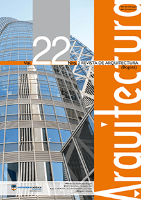
Revista de Arquitectura-Bogota
Connecting Ideas, Inspiring Solutions in DesignRevista de Arquitectura-Bogota is a premier academic journal dedicated to the field of architecture, published by the esteemed Universidad Católica de Colombia, Facultad de Diseño. Since its inception in 1999, this Open Access journal has provided a vital platform for the dissemination of innovative research and critical discourse in architectural studies. With its commitment to the principles of open accessibility, the journal ensures that its diverse range of scholarly articles, case studies, and reviews are readily available to researchers, professionals, and students globally. The journal aims to foster collaboration and dialogue among architects, urban planners, and educators by publishing high-quality content that reflects contemporary issues and advancements in architecture. As an influential resource in the architectural community, Revista de Arquitectura-Bogota plays a crucial role in shaping the future of architectural practice and education in Latin America and beyond.

Cuadernos de Vivienda y Urbanismo
Exploring the Nexus of Housing and Urban DynamicsCuadernos de Vivienda y Urbanismo, published by the Pontificia Universidad Javeriana, Facultad de Arquitectura y Diseño, serves as a vital platform for researchers and practitioners in the fields of urban studies and planning. With a focus on the intricate relationships between housing, urban development, and social dynamics, this journal aims to foster interdisciplinary discourse and present innovative research that addresses contemporary urban challenges. Although its coverage on Scopus has been discontinued from 2012 to 2019, it continues to be an informative resource for understanding urban phenomena, evidenced by its rankings in the 24th percentile in Urban Studies and the 10th percentile in Geography, Planning and Development. Scholars and professionals are encouraged to explore the rich repository of articles that reflect both local and global contexts, providing insights that inform policy and practice in urban environments.
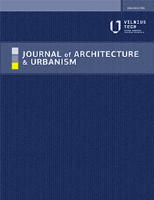
Journal of Architecture and Urbanism
Pioneering Research for Evolving Urban ChallengesThe Journal of Architecture and Urbanism, published by VILNIUS GEDIMINAS TECH UNIV, stands as a pivotal resource for scholars and practitioners in the fields of architecture and urban studies. Since its inception in 2012, the journal has committed to advancing research and discourse on the design, planning, and functionality of urban environments, reflecting a dedicated focus on contemporary challenges in architecture and urbanism. With an impressive open access model implemented since 2018, it ensures that innovative research is accessible to a global audience, fostering collaboration and knowledge exchange. The journal boasts a commendable reputation, categorized in the Q2 quartile for Architecture and Q3 in both Geography, Planning and Development and Urban Studies as of 2023, while maintaining respectable Scopus rankings. Addressing key themes from sustainable design to socio-economic impacts on urban spaces, the journal aims to inspire new models and solutions that meet the evolving needs of growing urban populations. This is a must-read for anyone engaged in the intersection of architecture and urban development.

Festival dell Architettura Magazine
Advancing Research in Architecture and Visual ArtsFestival dell Architettura Magazine, published by FESTIVAL ARCHITETTURA EDIZIONI, is a distinctive Open Access journal dedicated to the realms of architecture, urban studies, and the visual and performing arts. Established with a vision to foster interdisciplinary dialogue, the journal has been a part of the academic landscape since 2013 and has converged its insightful contributions from 2018 to 2023. Despite being ranked in the lower quartiles in its respective categories—Q4 in Architecture and Urban Studies, and Q3 in Visual Arts and Performing Arts—this publication remains vital for emerging researchers and seasoned professionals alike, as it provides a platform for innovative ideas and practices from Italy and beyond. It serves as a key resource for those who wish to engage with contemporary architectural thought and cultural expressions, facilitating open access to research that highlights the intersections of space, society, and art.
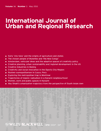
INTERNATIONAL JOURNAL OF URBAN AND REGIONAL RESEARCH
Fostering Dialogue on Urban DevelopmentINTERNATIONAL JOURNAL OF URBAN AND REGIONAL RESEARCH, published by Wiley, serves as a vital platform for scholars and practitioners in the fields of Urban Studies, Sociology, and Political Science. Established in 1977, this esteemed journal has consistently maintained its reputation as a leader in urban and regional research, boasting impressive impact factor metrics and ranking in the top quartile (Q1) across various categories, including Development and Sociology. With a robust Scopus ranking, where it stands at #25 in Urban Studies and #36 in Development, the journal is recognized for its high-quality, innovative research that contributes to a nuanced understanding of the challenges and dynamics faced by urban environments. Although the journal does not currently offer open access, its diverse and rich content remains accessible to an international audience dedicated to advancing knowledge and fostering dialogue in urban development. Geographically rooted in the United Kingdom, the journal continues its mission to influence both academic and policy-making spheres worldwide, making it an indispensable resource for researchers and professionals alike.

Studies in History and Theory of Architecture-Studii de Istoria si Teoria Arhitecturii
Cultivating Innovative Perspectives in Architectural StudiesStudies in History and Theory of Architecture - Studii de Istoria si Teoria Arhitecturii, published by EDITURA UNIV ION MINCU in Romania, serves as a crucial platform for scholarly dialogue in the interdisciplinary fields of architecture, conservation, and urban studies. With an ISSN of 2344-6544 and E-ISSN 2457-1687, this open-access journal has been disseminating valuable research outputs since 2014, facilitating global access to knowledge. Although it currently holds a Q4 quartile ranking in multiple categories, including Conservation and Urban Studies, the journal aims to elevate discussions surrounding architectural theory and history, safety, risk, and reliability in built environments. Positioned at the intersection of arts and humanities, the journal encourages contributions that challenge conventional paradigms and enrich academic discourse. As a vital resource for researchers, professionals, and students alike, Studii de Istoria si Teoria Arhitecturii is dedicated to nurturing the growth of architectural knowledge and its practical applications in contemporary society.
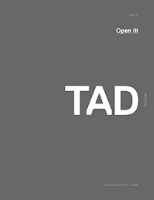
Technology-Architecture + Design
Redefining Architectural Practices with Technological InsightsTechnology-Architecture + Design is a pioneering academic journal published by Taylor & Francis Ltd, dedicated to exploring the intersection of technology within architectural and design practices. With an impactful presence in the field since its inception in 2017, the journal has quickly ascended in academic rankings, achieving a Q2 categorization in Architecture and a notable Q1 ranking in Visual Arts and Performing Arts, underscoring its significance in these dynamic areas of study. The journal aims to provide an open platform for innovative research that addresses contemporary challenges in architecture and urban planning, utilizing technological advancements as a central theme. As a vital resource for scholars, practitioners, and students alike, Technology-Architecture + Design publishes high-quality, peer-reviewed articles that contribute to the discourse surrounding sustainable design, digital fabrication, and smart urbanism, making it an essential read for those passionate about the future of built environments.

Constelaciones
Fostering interdisciplinary dialogue for a dynamic world.Constelaciones is a respected journal published by the FUNDACION UNIV SAN PABLO CEU, which serves as a vital platform for scholars and practitioners in the dynamic fields of cultural studies, social sciences, and humanities. With its ISSN 2340-177X and E-ISSN 2531-1360, this journal facilitates open dialogues on contemporary issues, featuring rigorous academic articles that contribute to theoretical frameworks and practical applications. The journal aims to foster interdisciplinary research and collaboration, making it an essential resource for researchers, professionals, and students. While detailed metrics such as impact factor and HIndex are yet to be established, the rich content and diverse scope signal the journal's commitment to advancing knowledge and enriching the academic community. Located in Alcorcón, Madrid, Spain, Constelaciones welcomes submissions that align with its mission of exploring innovative perspectives and emergent trends within its designated fields.
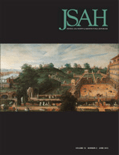
JOURNAL OF THE SOCIETY OF ARCHITECTURAL HISTORIANS
Exploring the Intersection of Past and Present in ArchitectureJOURNAL OF THE SOCIETY OF ARCHITECTURAL HISTORIANS, published by the SOCIETY OF ARCHITECTURAL HISTORIANS, serves as a premier platform for the dissemination of scholarly research and critical discourse in the fields of architecture and architectural history. Established in 1970, this journal has undergone significant evolution, focusing on interdisciplinary studies that explore architectural heritage, theory, and practice. With a current impact factor that places it within the Q2 category in both History and Visual Arts and Performing Arts, as well as Q3 in Architecture, the journal maintains a robust reputation among academics and professionals alike. Although it operates under traditional access models, its essential role in fostering a deep understanding of architectural narratives and their socio-cultural contexts remains unparalleled. The journal also ranks favorably in Scopus, highlighting its importance in the arts and humanities, as well as engineering disciplines related to architecture. By bridging the gap between historical inquiry and contemporary architectural criticism, the JOURNAL OF THE SOCIETY OF ARCHITECTURAL HISTORIANS continues to be a vital resource for researchers, professionals, and students endeavoring to enrich their knowledge and contribute to this dynamic field.